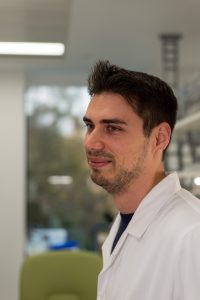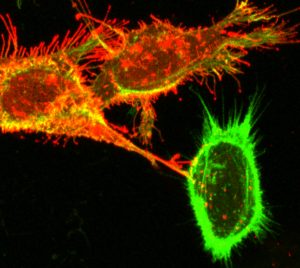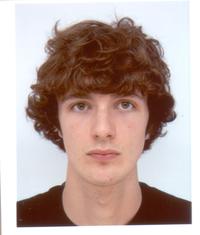Good bye Benni!
After a very successful defence, Benni has completed his PhD project in our lab. We wish you all the best for the future.
all the best for the future.
Wnt / PCP signalling regulates the emergence of Wnt cytonemes! Benni’s work is accepted in eLife.
Communication helps the cells that make up tissues and organs to work together as a team. One way that cells share information with each other as tissues grow and develop is by exchanging signaling proteins. These interact with receptors on the surface of other cells; this causes the cell to change how it behaves.
The Wnt family of signaling proteins orchestrate organ development. Wnt proteins influence which types of cells develop, how fast they divide, and how and when they move. Relatively few cells, or small groups of cells, in developing tissues produce Wnt proteins, while larger groups nearby respond to the signals.
We do not fully understand how Wnt proteins travel between cells, but recent work revealed an unexpected mechanism – cells seem to hand-deliver their messages. Finger-like structures called cytonemes grow out of the cell membrane and carry Wnt proteins to their destination. If the cytonemes do not form properly the target cells do not behave correctly, which can lead to severe tissue malformation.

Mattes et al. have now investigated how cytonemes form using a combination of state-of-the-art genetic and high-resolution imaging techniques. In initial experiments involving zebrafish cells that were grown in the laboratory, Mattes et al. found that the Wnt proteins kick start their own transport; before they travel to their destination, they act on the cells that made them. A Wnt protein called Wnt8a activates the receptor Ror2 on the surface of the signal-producing cell. Ror2 then triggers signals inside the cell that begin the assembly of the cytonemes. The more Ror2 is activated, the more cytonemes the cell makes, and the more Wnt signals it can send out.
Read the full story in eLife : https://elifesciences.org/articles/36953
Josh is in the team!
 In his PhD project, Josh will decipher the function of the Fused protein in cilia development and Hh signalling in zebrafish.
In his PhD project, Josh will decipher the function of the Fused protein in cilia development and Hh signalling in zebrafish.
Welcome Lucy!
Lucy has joined the team as a postdoctoral research fellow to analyse the molecular mechanism underlying cytoneme formation in neural plate development. 


